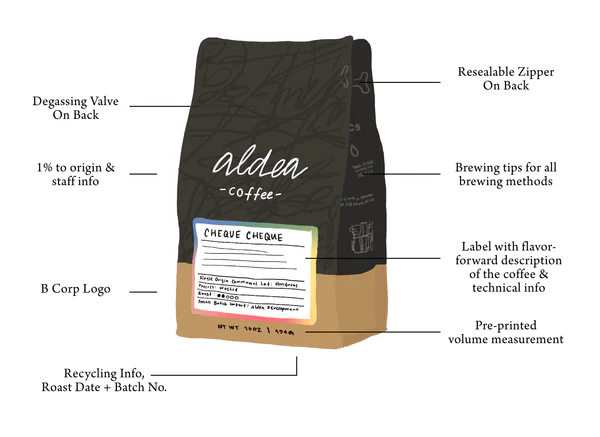Let’s chat about something every coffee lover encounters but might not always give much thought to—the information on a bag of coffee. Coffee packaging can be a treasure trove of details, guiding us to choose the best beans for our taste. Here’s a straightforward breakdown of what to look for and how to interpret it.
Origin: A Flavor Blueprint
The country of origin isn’t just a fun fact; it’s a clue to the coffee’s flavor profile. African coffees, like those from Ethiopia, often have a bright acidity. If you see a Central American country like Guatemala or Colombia, expect a smoother, less acidic brew. And Brazil? It’s known for its nutty, more subtle flavors.
Roast Type: Light or Dark?
Noticed terms like “espresso roast” or “filter roast” on your coffee? These aren’t just suggestions. A filter roast is typically lighter, making it perfect for pour-overs or a French press, emphasizing the coffee’s natural flavors. An espresso roast, on the other hand, is darker and crafted for espresso machines, giving a bolder taste.
Roast Date: Freshness is Key
The roast date gives you a peek into the coffee’s freshness. Aim for coffee that’s been roasted within the last 30 days to enjoy its flavors fully. The fresher, the better, especially if you plan to savor it slowly.
Processing Method: The Flavor Maker
The processing method can drastically alter a coffee’s taste. A “natural” or “dry” process tends to produce a balanced, sweet coffee. A “washed” coffee often has a cleaner, more acidic profile. And then there are experimental methods like “anaerobic fermentation,” promising unique and complex flavors.
Blend or Single Origin?
A single-origin coffee gives you specific tastes from one location, offering a particular set of flavors. Blends combine beans from various places, aiming for a harmonious flavor profile that’s consistent year-round.
Flavor Descriptors: Imagining the Taste
Those poetic-sounding notes like “strawberry, jasmine, chocolate” are more than just fancy words. They hint at the primary flavors you might detect. But remember, tasting is subjective. Not finding “hints of apricot” doesn’t mean you brewed it wrong. It’s about the overall balance and enjoyment of the cup.
Coffee Grading: A Score to Guide You
Some packages might include a quality score, often referred to as a Q grade. A score above 80 means you’re getting into specialty coffee territory—the higher, the better. This score helps gauge the coffee’s overall quality but isn’t the sole determinant of how much you’ll enjoy it.
Brewing the Perfect Cup
Understanding your coffee packaging can enhance your brewing experience, helping you to choose the right beans for your taste and brewing method. Whether you’re a fan of a bright, acidic coffee to perk up your mornings or a smooth, chocolatey cup for quiet afternoons, there’s a world of flavors waiting to be explored, right from the packaging.
So next time you’re eyeing a new bag of coffee, take a moment to decode its label. It might just lead you to your new favorite brew.



Leave a Reply